Members of The Highland Council’s South Planning Applications Committee have unanimously refused permission for a planning application from Inverness Paving Ltd regarding land at Treetop Stables, Faebuie, Culloden Moor, Inverness.
Councillors have refused the application for change of use from an equestrian centre to holiday, leisure and hospitality facilities including 13 lodges, cafe/shop, reception, laundry and restaurant.
Members unanimously approved a motion by Cllr Ron MacWilliam seconded by Cllr Carolyn Caddick to refuse the application which was contrary to officers’ recommendations to grant planning permission.
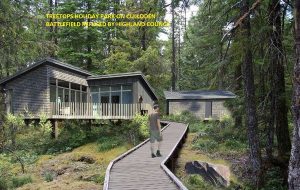
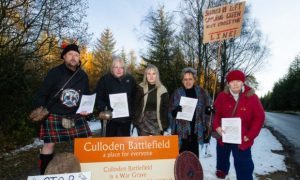
Picture by JASON HEDGES
The Group to Stop Development of Culloden campaigners opposing Treetops Stables development have a hard fought win. Mary MacLennan, Kate McManus, Katrina Woods, Carolyn Seggie, Paul Jameson
Inverness Paving Ltd’s plans for a change of use from an equestrian centre at Tree Top stables in Faebuie to a leisure facility with 13 lodges, café/shop, laundry and restaurant were first rejected in May 2019, but reappeared a few months later with some alterations.
Full new plans were submitted in May this year, and attracted renewed protests and objections.
According to historians, the site was the staging ground for government troops preparing to do battle against the Jacobite army.
The first application was refused by the council under delegated powers on the grounds that it would not ‘preserve, enhance or develop’ the site, citing both the Highland-wide development plan and the Culloden Muir conservation area.
At the south planning meeting, councillors pointed out that the changes in the new plans were minimal, concerning the siting of lodges and access paths leading to them.
They raised numerous areas of concern, including road safety, tree management and ‘development creep’ in the extended battlefield area.
Local member Carolyn Caddick said: “All the information that’s come forward from the applicant is not suggesting anything different from the last application.
“There have been three to four thousand objections, including the two community councils, and Scottish ministers say if we move to approve they may call it in.
“This is a huge development where there should be no development.
“It will compromise and have a significant impact on the battlefield, a site of international and national importance.”
She went on to second a motion by councillor Ron MacWilliam to refuse the application based on a raft of policy contraventions.
Mr MacWilliam said: “This has got to stop somewhere. This battle took place over a wide area, you have to reasonable about where you’re allowed to build and not build, and we keep going back over it.
“I recognise the need for economic growth and the provision of tourist facilities, but this is a battlefield war grave, a place of quiet and we need to keep it intact.”
Core battlefield owners, the National Trust for Scotland welcomed the decision, and called for a national conversation about Culloden.
Phil Long, NTS chief executive said: “This is an excellent and wise decision by Highland councillors and we commend them for it.
Councillor Ken Gowans’ advocacy for the Culloden Battlefield conservation area and his staunch opposition to this project is also recognised and appreciated.
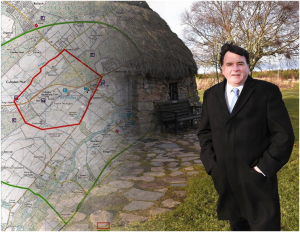
A photo montage showing Ken Gowans with the Culloden boundaries.

Cr Ron MacWilliam

Cr Carolyn Caddick
References
The Highland Council
https://www.highland.gov.uk/news/article/13145/highland_councillors_unanimously_refuse_culloden_moor_planning_application

https://www.pressandjournal.co.uk/fp/news/highlands/2719666/councillors-throw-out-culloden-moor-holiday-village-plans-for-second-time/
by Susy Macaulay December 9, 2020, 9:46 am
Group to Stop Development at Culloden Moor – Facebook
https://www.facebook.com/groups/817550814926691//


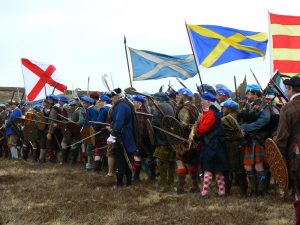

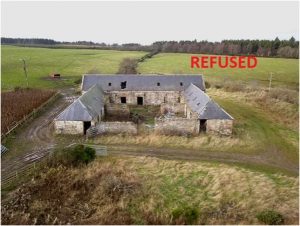
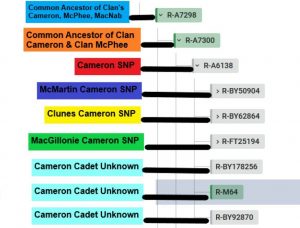


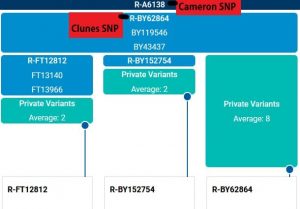

 Congratulations to Commissioner for Clan Cameron in Australia, Dr James Lachlan Cameron, who has been recently awarded the Doctor of Philosophy from the Australian National University.
Congratulations to Commissioner for Clan Cameron in Australia, Dr James Lachlan Cameron, who has been recently awarded the Doctor of Philosophy from the Australian National University.



